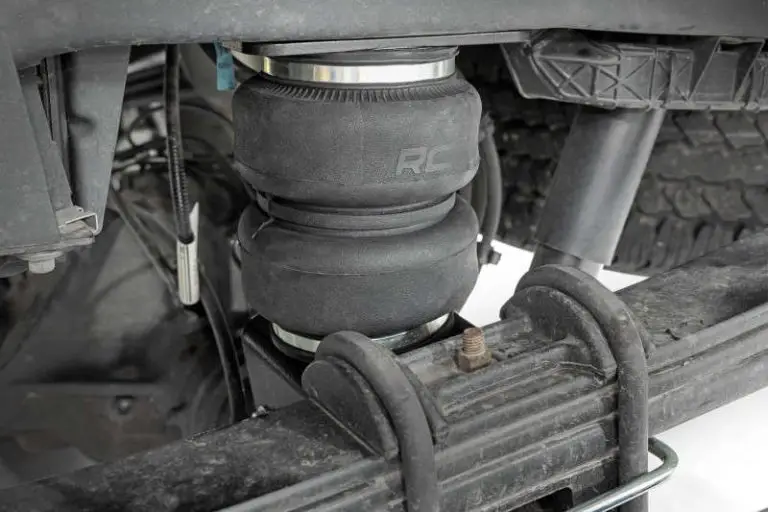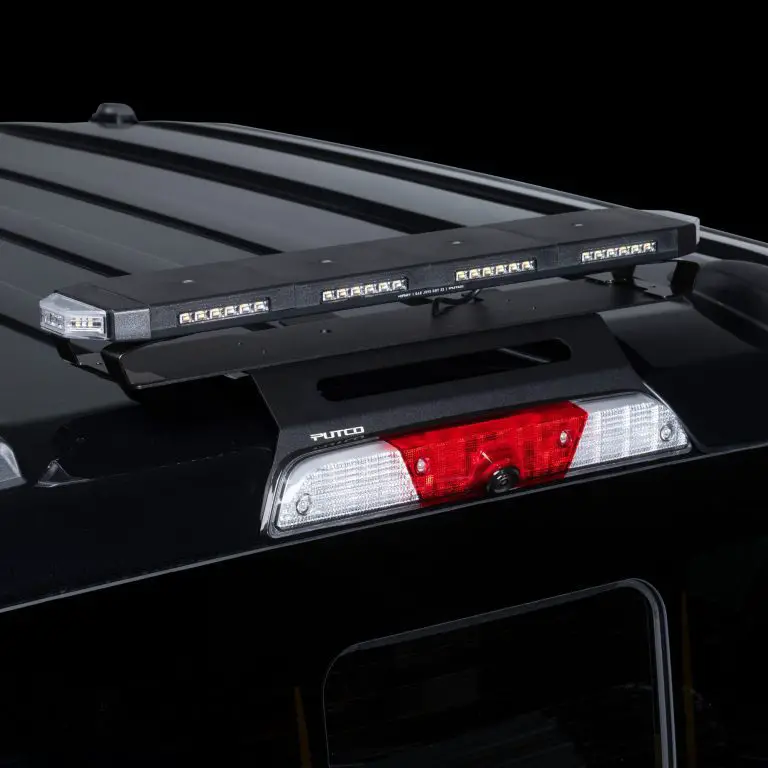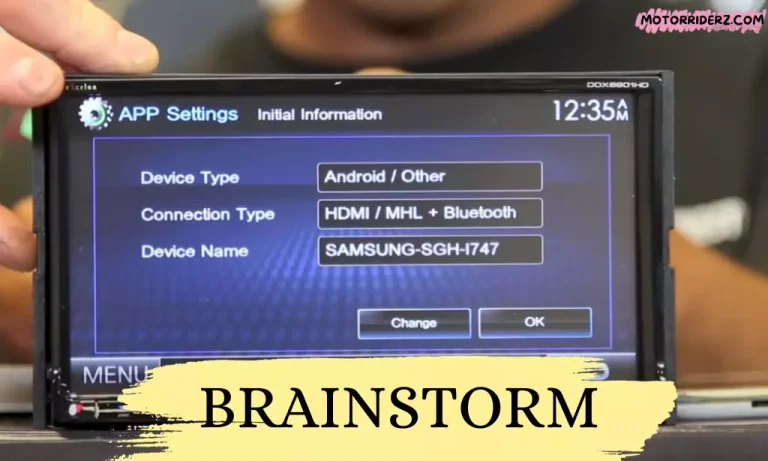5.7 Hemi Bad Crankshaft Position Sensor Symptoms [2023]
We will delve into the world of the 5.7 Hemi engine and explore one critical component that can cause various issues when it malfunctions: the crankshaft position sensor. The crankshaft position sensor plays a crucial role in the operation of the engine, and when it goes bad, it can lead to a range of symptoms that impact performance and drivability.
Whether you’re a car enthusiast, a DIY mechanic, or simply a curious vehicle owner, understanding the symptoms of a bad crankshaft position sensor in a 5.7 Hemi engine is valuable knowledge. By recognizing these signs, you can diagnose potential issues early and take appropriate action to prevent further damage and ensure optimal engine performance.
In this article, we will explore the common symptoms that indicate a faulty crankshaft position sensor in a 5.7 Hemi engine. From engine misfires and starting difficulties to rough running and decreased fuel efficiency, we will discuss how these symptoms manifest and their impact on your driving experience. Additionally, we will guide you through the diagnostic process and provide insights into replacing the sensor should the need arise.
We will also share preventive maintenance tips to help you maintain the longevity and reliability of the crankshaft position sensor in your 5.7 Hemi engine. By following these tips, you can mitigate the chances of sensor failure and ensure the smooth operation of your engine.
So, if you’re ready to dive into the world of crankshaft position sensors and learn about the symptoms to watch out for in your 5.7 Hemi engine, let’s get started!
What is a Crankshaft Position Sensor?
A crankshaft position sensor, also known as a CKP sensor, is an important component in a vehicle’s engine management system. It is responsible for monitoring the position and rotational speed of the crankshaft, which is a vital aspect of the engine’s operation.
The crankshaft is a key component of the engine that converts the reciprocating motion of the pistons into rotational motion, providing the power needed to drive the vehicle. The crankshaft position sensor detects the precise position and speed of the crankshaft, allowing the engine control module (ECM) to accurately synchronize fuel injection, ignition timing, and other critical engine functions.
The sensor typically consists of a magnet or Hall-effect sensor mounted near the crankshaft’s rotating wheel or gear. As the crankshaft rotates, the teeth or notches on the wheel or gear pass by the sensor, generating electrical signals. These signals are then sent to the ECM, which uses the information to determine the crankshaft’s position and speed.
The ECM relies on the crankshaft position sensor’s data to make real-time adjustments to the engine’s timing and fuel delivery. This ensures efficient combustion, optimal performance, and reduced emissions. Without accurate readings from the crankshaft position sensor, the engine may experience issues such as misfires, rough running, and starting difficulties.
The crankshaft position sensor plays a critical role in providing the ECM with crucial information about the crankshaft’s position and rotational speed. This allows the ECM to make precise adjustments to various engine parameters, ensuring smooth operation and optimal performance of the vehicle.
Symptoms of a Bad Crankshaft Position Sensor in a 5.7 Hemi
The crankshaft position sensor is a vital component in the operation of a 5.7 Hemi engine. When it starts to malfunction, it can lead to various noticeable symptoms. Here are some common signs of a bad crankshaft position sensor in a 5.7 Hemi:
1. Engine Misfires
A faulty crankshaft position sensor can cause engine misfires, where one or more cylinders fail to ignite properly. This can result in a rough running engine, decreased power, and vibrations.
2. Difficulty Starting
A bad crankshaft position sensor may make it difficult for the engine to start or cause extended cranking times before it fires up. You may experience intermittent starting issues or a complete failure to start the engine.
3. Stalling
The engine may stall or shut off unexpectedly while driving if the crankshaft position sensor is malfunctioning. This can be a safety concern, especially at higher speeds or in traffic.
4. Erratic RPM
The RPM (revolutions per minute) gauge on the dashboard may fluctuate abnormally or show inconsistent readings when the crankshaft position sensor is faulty. The engine speed may seem unstable, leading to a jerky driving experience.
5. Decreased Fuel Efficiency
A bad crankshaft position sensor can disrupt the engine’s fuel injection timing, resulting in inefficient combustion. This can lead to decreased fuel efficiency and an increase in fuel consumption.
6. Check Engine Light
When the ECM detects a problem with the crankshaft position sensor, it will often trigger the check engine light on the dashboard. Retrieving the error codes using a diagnostic scanner can help pinpoint the issue.
7. Loss of Power
A malfunctioning crankshaft position sensor can cause a noticeable loss of power during acceleration or while driving at higher speeds. The engine may feel sluggish and unresponsive.
8. Engine Hesitation
You may experience hesitation or a delay in engine response when pressing the accelerator pedal. The engine may hesitate before accelerating, making it challenging to maintain a smooth driving experience.
Diagnosing a Bad Crankshaft Position Sensor
When you experience symptoms that indicate a faulty crankshaft position sensor in your vehicle, it’s important to perform a diagnostic process to confirm the issue. Here are the steps involved in diagnosing a bad crankshaft position sensor:
1. Retrieve Error Codes
Use an OBD-II scanner or code reader to retrieve any error codes stored in the engine control module (ECM). These codes can provide valuable information about the specific issue related to the crankshaft position sensor. Look for codes related to the sensor, such as “Crankshaft Position Sensor Circuit Malfunction” or “Crankshaft Position Sensor Range/Performance.”
2. Visual Inspection
Perform a visual inspection of the crankshaft position sensor and its wiring connections. Look for any signs of physical damage, such as corrosion, frayed wires, loose connections, or oil contamination. Ensure that the sensor is properly mounted and secured.
3. Sensor Resistance Test
Use a multimeter to measure the resistance of the crankshaft position sensor. Consult the vehicle’s repair manual or manufacturer’s specifications for the acceptable resistance range. If the measured resistance is outside the specified range, it indicates a faulty sensor that requires replacement.
4. Sensor Voltage Test
With the ignition on but the engine not running, use the multimeter to measure the voltage output of the crankshaft position sensor. Again, refer to the vehicle’s repair manual for the specific voltage range. If the sensor is not producing the expected voltage or there is no voltage output at all, it suggests a faulty sensor.
5. Check Sensor Signal
Using a digital oscilloscope or an advanced diagnostic tool, check the sensor signal while cranking the engine or during normal engine operation. The oscilloscope should display a consistent and accurate waveform. Any irregularities or inconsistencies in the signal may indicate a malfunctioning sensor.
6. Test Wiring and Connector
Inspect the wiring harness and connector associated with the crankshaft position sensor. Look for signs of damage, loose connections, or corrosion. Use a wiring diagram to verify the continuity of the wiring and perform a voltage drop test to ensure proper electrical conductivity.
Replacing the Crankshaft Position Sensor
If you have determined that the crankshaft position sensor in your vehicle is faulty and needs to be replaced, follow these general steps to ensure a successful replacement:
1. Gather the necessary tools and parts: Before starting the replacement process, gather the tools you’ll need, which may include a socket set, wrenches, pliers, and a torque wrench. Additionally, ensure you have the replacement crankshaft position sensor that is compatible with your vehicle.
2. Locate the sensor: Refer to your vehicle’s repair manual to find the exact location of the crankshaft position sensor. It is typically located near the crankshaft pulley or flywheel, and it may require removing certain components for access.
3. Disconnect the battery: To ensure safety and prevent electrical damage, disconnect the negative terminal of the vehicle’s battery.
4. Remove any necessary components: Depending on the sensor’s location, you may need to remove other components, such as the air intake duct, engine covers, or other accessories that obstruct access to the sensor.
5. Disconnect the electrical connector: Carefully detach the electrical connector from the crankshaft position sensor. You may need to remove any clips or fasteners holding the connector in place.
6. Remove the sensor: Using the appropriate tools, carefully remove the mounting bolts or screws that secure the sensor in place. Gently pull the sensor straight out from its mounting location.
7. Install the new sensor: Align the new crankshaft position sensor with the mounting hole, ensuring proper orientation. Insert the sensor into the mounting hole and hand-tighten the bolts or screws to secure it in place.
8. Reconnect the electrical connector: Attach the electrical connector to the new sensor, ensuring a secure connection. Double-check that any clips or fasteners are properly engaged.
9. Reinstall any removed components: If you had to remove other components during the process, carefully reinstall them, following the proper sequence and torque specifications.
10. Reconnect the battery: Once you’ve completed the installation, reconnect the negative terminal of the vehicle’s battery.
11. Test the new sensor: Start the vehicle and observe its operation. Ensure that the engine runs smoothly and check for any warning lights on the dashboard. If everything appears normal, the replacement was successful.
Preventive Maintenance Tips for the Crankshaft Position Sensor
To ensure the longevity and proper functioning of the crankshaft position sensor, it’s essential to follow some preventive maintenance tips. Here are a few recommendations to help prolong the life of your crankshaft position sensor:
1. Keep the Engine Clean: Regularly clean the engine bay to prevent dirt, debris, and oil from accumulating on the sensor. A clean engine reduces the risk of contaminants interfering with the sensor’s operation.
2. Maintain Proper Oil Levels and Quality: The crankshaft position sensor relies on the lubrication provided by the engine oil. Ensure the engine oil is at the recommended level and change it as per the manufacturer’s guidelines. Using high-quality oil can also help maintain optimal sensor performance.
3. Check the Wiring and Connectors: Inspect the wiring harness and connectors associated with the crankshaft position sensor. Look for signs of damage, fraying, or corrosion. Make sure the connections are secure and free from debris. Repair or replace any damaged wiring or connectors.
4. Avoid Excessive Heat: Excessive heat can damage the crankshaft position sensor. Avoid extended idling or driving in extreme heat conditions whenever possible. If you notice any signs of overheating, address the cooling system issues promptly.
5. Use Genuine Parts: When it comes to replacement, always use genuine or high-quality aftermarket parts that meet the manufacturer’s specifications. Inferior quality parts may have shorter lifespans or not provide accurate readings, leading to potential issues.
6. Follow Regular Maintenance Schedule: Adhere to the recommended maintenance schedule for your vehicle. This includes regular inspections, oil changes, filter replacements, and tune-ups. Keeping the engine in good condition reduces the chances of sensor-related problems.
7. Be Mindful of Vibrations: Excessive vibrations can put stress on the crankshaft position sensor and its mounting. Avoid rough driving conditions, potholes, and excessive engine vibrations. If you notice any unusual vibrations, have them addressed promptly.
8. Address Other Engine Issues: Timely resolution of other engine-related problems, such as ignition system issues, fuel delivery problems, or sensor malfunctions, can help prevent additional strain on the crankshaft position sensor.
9. Diagnose and Address Check Engine Lights: If the check engine light illuminates, promptly retrieve and diagnose any error codes related to the crankshaft position sensor. Ignoring such warnings can lead to further damage or poor engine performance.
10. Regularly Inspect and Test the Sensor: During routine maintenance, visually inspect the sensor for signs of damage or oil contamination. Additionally, consider testing the sensor’s voltage output and resistance periodically to ensure it is within the specified range.
FAQ:
Q: What are the symptoms of a bad crankshaft position sensor in a 5.7 Hemi engine?
A: Symptoms of a bad crankshaft position sensor in a 5.7 Hemi engine can vary, but some common signs include engine misfires, difficulty starting the engine, stalling, erratic RPM readings, decreased fuel efficiency, check engine light illumination, loss of power, and engine hesitation.
Q: How do engine misfires indicate a bad crankshaft position sensor in a 5.7 Hemi?
A: A faulty crankshaft position sensor can disrupt the engine’s timing and fuel delivery, leading to engine misfires. These misfires can occur randomly or in specific cylinders, resulting in rough engine operation, loss of power, and vibrations.
Q: Can a bad crankshaft position sensor cause starting issues in a 5.7 Hemi?
A: Yes, a faulty crankshaft position sensor can cause difficulty starting the engine in a 5.7 Hemi. It may lead to extended cranking times, intermittent starting problems, or a complete failure to start.
Q: Why does a 5.7 Hemi engine stall with a bad crankshaft position sensor?
A: When the crankshaft position sensor malfunctions, it can disrupt the engine’s timing signals, causing the engine to stall unexpectedly. This can occur at idle or while driving, posing a safety concern.
Q: What role does the check engine light play in indicating a bad crankshaft position sensor?
A: A malfunctioning crankshaft position sensor can trigger the check engine light to illuminate on the dashboard. The engine control module (ECM) detects issues related to the sensor, stores error codes, and signals the warning light to alert the driver.
Q: How does a bad crankshaft position sensor affect fuel efficiency in a 5.7 Hemi?
A: An inaccurate crankshaft position sensor can disrupt the engine’s fuel injection timing, leading to inefficient combustion. This inefficiency can result in decreased fuel efficiency, causing the engine to consume more fuel than necessary.
Q: Can a bad crankshaft position sensor cause a loss of power in a 5.7 Hemi?
A: Yes, a faulty crankshaft position sensor can contribute to a loss of power in a 5.7 Hemi. It can disrupt the engine’s timing and fuel delivery, leading to decreased performance and reduced power output.
Q: Why does engine hesitation occur with a bad crankshaft position sensor?
A: An inaccurate crankshaft position sensor can result in improper fuel injection timing, causing engine hesitation. When pressing the accelerator pedal, the engine may hesitate before accelerating smoothly, affecting overall driving performance.
Q: Is it necessary to replace a bad crankshaft position sensor in a 5.7 Hemi?
A: Yes, a bad crankshaft position sensor should be replaced to restore proper engine operation. Continuing to drive with a faulty sensor can lead to further engine damage, increased fuel consumption, and potential drivability issues.
Q: Can a bad crankshaft position sensor be diagnosed and replaced by a non-professional?
A: While diagnosing and replacing a crankshaft position sensor can be done by an experienced DIY enthusiast, it is recommended to seek professional assistance. Professional mechanics have the necessary tools, expertise, and access to diagnostic equipment to accurately diagnose and replace the sensor, ensuring proper installation and functionality.




